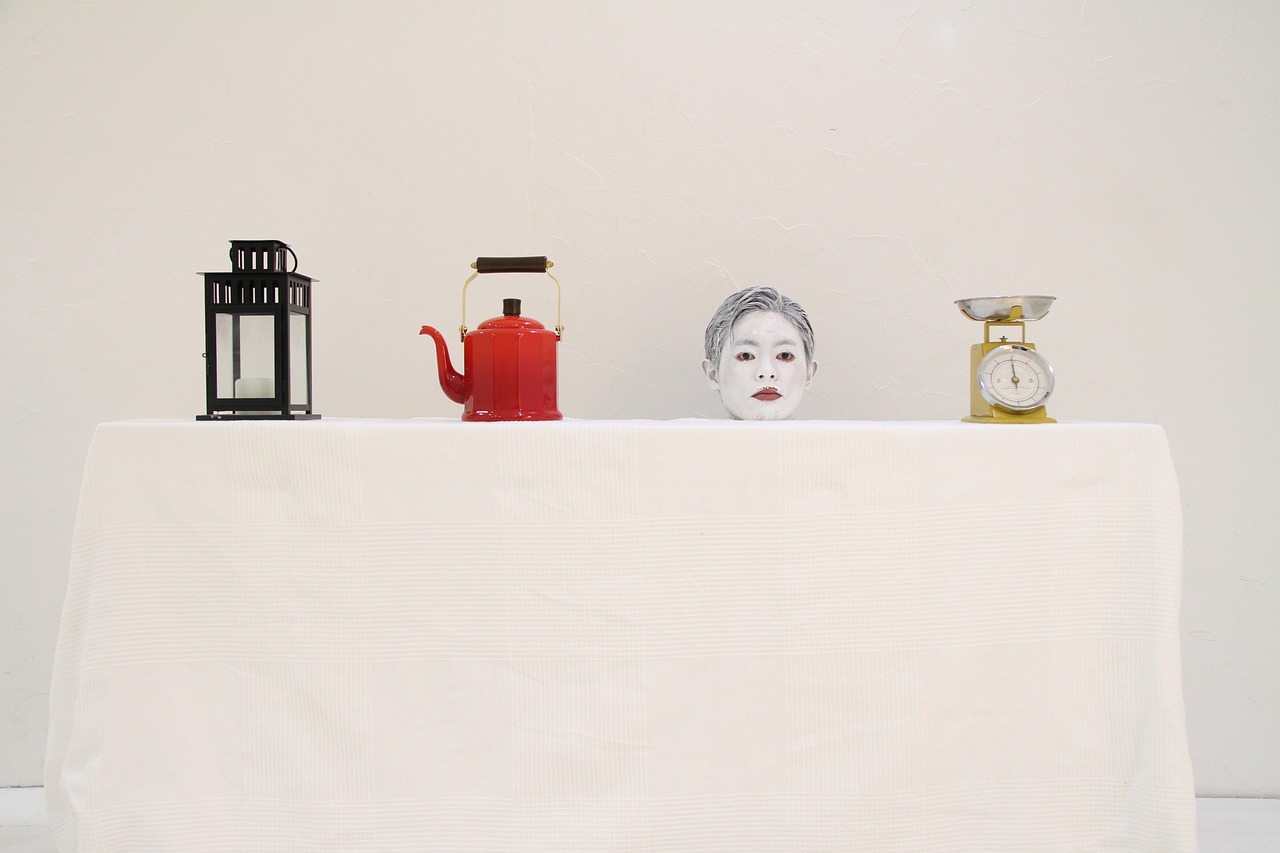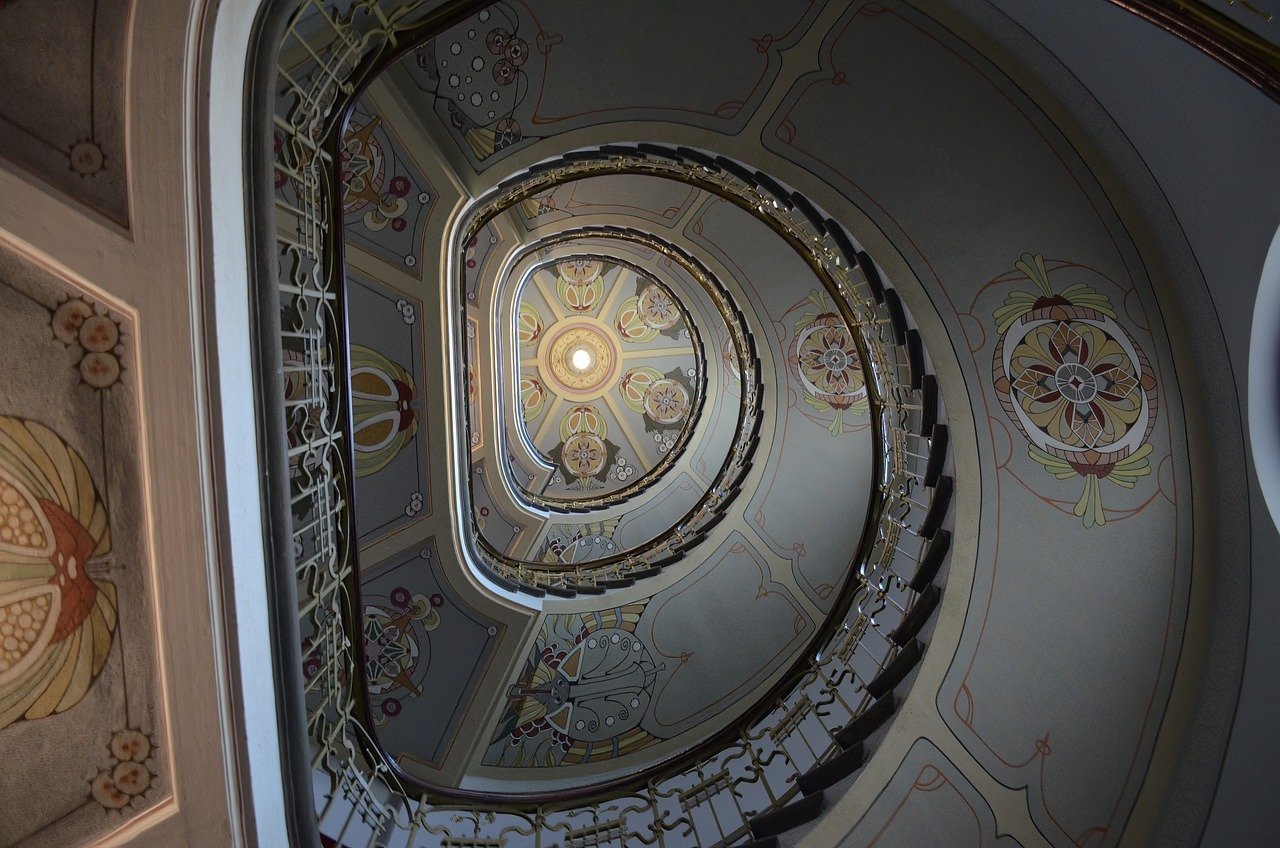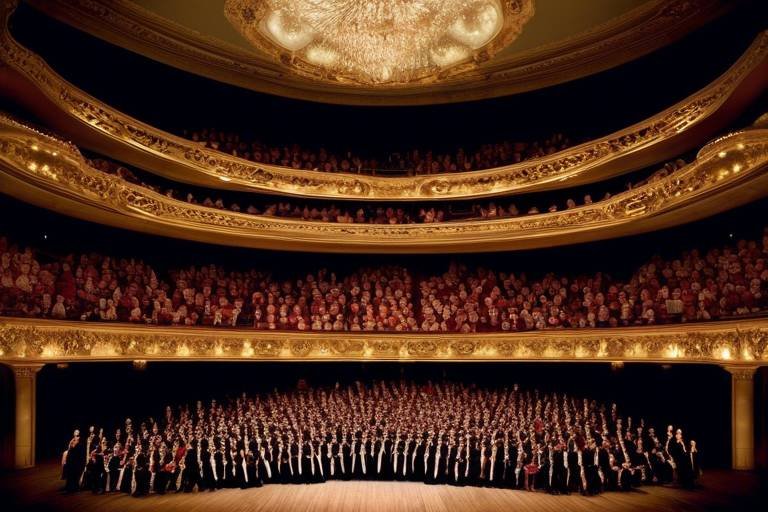The Cultural Impact of Impressionism in France
The Cultural Impact of Impressionism in France was nothing short of a revolution that swept through the artistic landscape of the 19th century. Originating in France, Impressionism transcended the boundaries of traditional art, leaving an indelible mark on not just painting but also literature, music, and fashion.
Impressionism emerged as a response to the rigidity of academic art, challenging the established norms and embracing a fresh approach to portraying the world. Artists such as Claude Monet, Edgar Degas, and Pierre-Auguste Renoir were at the forefront of this movement, daring to experiment with light, color, and brushstrokes in ways never seen before.
The hallmark of Impressionist art lies in its emphasis on capturing fleeting moments and ephemeral impressions. By eschewing detailed precision in favor of capturing the essence of a scene, Impressionist artists created works that pulsated with life and energy, inviting viewers to immerse themselves in the beauty of the moment.
Impressionism was not just a stylistic choice; it was a cultural phenomenon that reflected the shifting social dynamics of French society. The movement coincided with a period of rapid industrialization and urbanization, capturing the bustling energy of city life and the tranquility of the countryside in equal measure.
French writers and poets were quick to embrace the spirit of Impressionism, infusing their works with the same sense of immediacy and vibrancy found in the paintings of their contemporaries. The fluidity of Impressionist art inspired a new wave of literary expression, breaking free from traditional forms and embracing a more subjective and sensory approach to storytelling.
Impressionism's influence extended beyond the realms of visual art and literature, permeating the world of music as well. French composers such as Claude Debussy drew inspiration from Impressionist principles, weaving delicate harmonies and evocative melodies that mirrored the ethereal beauty of Impressionist paintings.
Even the world of fashion was not immune to the allure of Impressionism. The soft pastel colors, delicate textures, and flowing silhouettes of Impressionist art found their way into French fashion trends, shaping the aesthetics of clothing and accessories in a way that mirrored the movement's emphasis on lightness and movement.
The legacy of Impressionism continues to endure, influencing artists and creators across the globe to this day. Its revolutionary approach to art and its celebration of the fleeting beauty of everyday life have left an indelible mark on French culture, inspiring generations of artists to push the boundaries of creativity and expression.
In the modern era, contemporary artists continue to draw inspiration from the principles of Impressionism, reinterpreting its core tenets in innovative and unexpected ways. The spirit of experimentation and the quest for capturing the essence of the moment remain as relevant today as they were during the height of the Impressionist movement.

Origins of Impressionism
The origins of Impressionism can be traced back to the mid-19th century in France, a time of great artistic experimentation and rebellion against traditional norms. The movement emerged as a response to the rigid standards of the French Academy of Fine Arts, which dictated the accepted styles and subjects for painting. A group of young artists, including Claude Monet, Pierre-Auguste Renoir, and Edgar Degas, sought to break free from these constraints and explore new ways of capturing light, color, and movement in their art.
These pioneering Impressionists were inspired by the changing world around them, particularly the industrialization of Paris and the rise of leisure activities such as boating and picnicking. They sought to capture the fleeting moments of everyday life with a sense of immediacy and spontaneity, often painting outdoors to observe the effects of natural light on their subjects.
One of the key events that marked the official beginning of Impressionism was the exhibition held in 1874 by a group of artists who were rejected by the Salon, the official art exhibition of the Academy. Led by Monet, the exhibition showcased works that defied traditional conventions, featuring loose brushwork, vibrant colors, and a focus on the play of light and shadow.
Impressionism was not immediately embraced by the art establishment or the public, who were initially puzzled by the artists' unconventional techniques and subject matter. However, over time, Impressionism gained recognition for its innovative approach to painting and its ability to capture the essence of modern life in a rapidly changing society.

Characteristics of Impressionist Art
Exploring how the art movement of Impressionism revolutionized the French art scene, influencing not only painting but also literature, music, and fashion during the 19th century.
Impressionist art is characterized by its emphasis on capturing the momentary effects of light and color. Instead of focusing on precise details, Impressionist artists aimed to convey the essence and atmosphere of a scene. This approach often involved using short, broken brushstrokes to create a sense of movement and vibrancy in their paintings.
The use of vibrant colors and the depiction of everyday scenes were also key characteristics of Impressionist art. Artists such as Claude Monet and Pierre-Auguste Renoir sought to portray the beauty of ordinary life, choosing subjects like landscapes, city streets, and leisure activities.
Additionally, Impressionist artists frequently painted en plein air, or outdoors, to capture the changing effects of natural light. This practice allowed them to infuse their works with a sense of spontaneity and freshness, breaking away from the rigid constraints of academic art.

Impressionism and French Society
Impressionism was not just an art movement in France during the 19th century; it was a cultural revolution that deeply intertwined with the fabric of French society. The Impressionist artists captured everyday scenes with a freshness and immediacy that resonated with the changing social dynamics of the time. Their paintings depicted bustling city life, leisure activities, and the beauty of nature, reflecting the shifting values and attitudes in French society.
Through their art, the Impressionists challenged the traditional norms of the French art establishment, which favored historical and mythological subjects. By focusing on contemporary subjects and using bold brushstrokes to convey light and color, they brought a new perspective to the artistic landscape. This departure from the academic conventions of the time mirrored the changing social structures in France, where old hierarchies were being questioned, and a more democratic ethos was emerging.
Furthermore, the Impressionists often portrayed the urbanization and industrialization of France, capturing the rapid changes happening in society. Their paintings depicted the bustling streets of Paris, the rise of the middle class, and the leisure activities of the new urban dwellers. In doing so, they not only documented the social transformations of the era but also became active participants in shaping the cultural identity of France.
Moreover, Impressionism was deeply connected to the political landscape of France during the 19th century. The movement emerged in the aftermath of the Franco-Prussian War and the Paris Commune, turbulent events that shook the foundations of French society. The Impressionists, with their focus on individual perception and subjective experience, offered a new way of looking at the world—one that resonated with the changing political ideologies of the time.
Overall, Impressionism was more than just a style of painting; it was a reflection of the complex interplay between art, society, and politics in France. The movement's influence extended far beyond the canvas, shaping the cultural landscape of the country and leaving a lasting impact on French society as a whole.

Impressionism's Influence on Literature
Impressionism, with its emphasis on capturing fleeting moments and subjective experiences, had a profound impact on French literature during the 19th century. Writers and poets were inspired by the innovative techniques and unconventional themes of Impressionist art, leading to a shift in literary expression.
Authors such as Emile Zola and Guy de Maupassant drew inspiration from Impressionist principles in their works, incorporating vivid descriptions and sensory details to create a more immersive reading experience. Just as Impressionist painters sought to convey the essence of a scene rather than its precise details, these writers focused on evoking emotions and impressions through their prose.
One of the key aspects of Impressionism's influence on literature was the emphasis on individual perception and subjective reality. Writers began to explore the inner thoughts and feelings of their characters in a more introspective manner, breaking away from traditional narrative structures and embracing a more fragmented and experimental style of storytelling.
Furthermore, Impressionist art encouraged writers to experiment with language and form, leading to the emergence of new literary techniques such as stream of consciousness and free indirect discourse. These innovations allowed authors to delve deeper into the psychology of their characters and convey a sense of immediacy and intimacy in their writing.
Overall, Impressionism's influence on French literature was revolutionary, paving the way for modernist movements and challenging conventional notions of storytelling and representation. By embracing the spirit of experimentation and pushing the boundaries of artistic expression, writers of the time were able to capture the essence of a rapidly changing society and create works that resonated with readers on a profound level.

Impressionism in Music
Impressionism in music, like its counterpart in painting, was a revolutionary movement that sought to capture fleeting moments and emotions through sound. Emerging in France during the late 19th century, Impressionist composers such as Claude Debussy and Maurice Ravel broke away from traditional musical forms and structures to create compositions that were characterized by their use of color, texture, and atmosphere.
One of the key characteristics of Impressionist music was its focus on timbre and tone color, much like how Impressionist painters emphasized light and color in their works. Composers used innovative harmonies, scales, and orchestrations to evoke mood and imagery, aiming to create a sense of ambiguity and fluidity in their music.
Claude Debussy, often referred to as the father of Impressionist music, was known for his groundbreaking compositions such as "Clair de Lune" and "La Mer." Debussy's use of whole tone scales, parallel chords, and non-traditional chord progressions created a dreamlike quality in his music, transporting listeners to ethereal landscapes.
Similarly, Maurice Ravel's compositions, including "Boléro" and "Daphnis et Chloé," showcased his mastery of orchestration and his ability to create intricate textures and rich harmonies. Ravel's music often painted vivid sonic pictures, drawing inspiration from nature, mythology, and the visual arts.
Impressionist music not only influenced the development of classical music but also had a profound impact on other genres, such as film scoring and jazz. The evocative and atmospheric qualities of Impressionist compositions continue to inspire musicians and composers across different styles and eras, highlighting the enduring legacy of this innovative musical movement.

Impressionism and Fashion
Impressionism not only left its mark on the art world but also extended its influence to the realm of fashion, shaping trends and aesthetics in 19th-century France. The movement's emphasis on capturing fleeting moments and the play of light and color translated seamlessly into the world of clothing and accessories. Just as Impressionist painters sought to depict the essence of a scene rather than its precise details, fashion designers of the time began to prioritize fluidity and vibrancy in their creations.
One of the key aspects of Impressionism's impact on fashion was the shift towards more natural and relaxed silhouettes. Traditional rigid corsets and structured garments gave way to flowing fabrics and looser fits, mirroring the movement's rejection of strict academic conventions in favor of a more spontaneous and organic approach. This change in attire not only reflected the evolving societal attitudes towards freedom and individual expression but also mirrored the movement's innovative spirit.
Furthermore, the color palette favored by Impressionist artists greatly influenced the hues and patterns used in clothing design. Soft pastel shades, subtle gradients, and delicate floral motifs became prevalent in fashion, echoing the dreamy and ethereal qualities found in Impressionist paintings. The intricate layering of colors and textures in garments mirrored the artists' techniques of capturing the interplay of light and shadow in their works.
As Impressionism continued to gain popularity, fashion houses and designers began to draw direct inspiration from specific artworks and artists. The bold brushstrokes of Monet's water lilies, the dappled sunlight in Renoir's garden scenes, and the vibrant cityscapes of Pissarro all found their way onto fabrics and garments, blurring the lines between art and fashion. This fusion of artistic movements not only elevated the aesthetics of clothing but also highlighted the interconnectedness of various creative disciplines.
In essence, Impressionism's influence on fashion transcended mere trends and styles, permeating the very essence of French sartorial culture during the 19th century. By infusing garments with the same spirit of innovation, experimentation, and emotion that characterized Impressionist art, designers paved the way for a new era of artistic expression through clothing, forever intertwining the worlds of art and fashion.

Legacy of Impressionism
The legacy of Impressionism in France is profound and enduring, leaving an indelible mark on the world of art and culture. The movement, which emerged in the 19th century, challenged traditional artistic conventions and paved the way for modern art as we know it today. Impressionism revolutionized the way artists approached color, light, and form, breaking away from the rigid rules of academic painting.
One of the key legacies of Impressionism is its emphasis on capturing fleeting moments and the essence of a scene rather than focusing on precise details. This approach has influenced generations of artists who seek to convey emotion and atmosphere through their work. The loose brushwork and emphasis on light and shadow characteristic of Impressionist art have become hallmarks of modern painting.
Furthermore, Impressionism's impact extended beyond the realm of visual art, influencing literature, music, and fashion. Writers and poets drew inspiration from the spontaneity and vibrancy of Impressionist paintings, incorporating similar themes of nature and everyday life into their works. Composers, such as Claude Debussy, embraced Impressionist principles in their music, creating compositions that mirrored the movement's emphasis on mood and tone.
In the world of fashion, Impressionism sparked a revolution in design, with artists and designers drawing on the movement's color palettes and textures to create avant-garde clothing and accessories. The soft, pastel hues and delicate patterns of Impressionist art found their way onto fabrics and garments, shaping the aesthetics of French fashion for years to come.
The legacy of Impressionism continues to resonate in contemporary art, with artists around the world paying homage to the movement's innovative spirit. From plein air painting to abstract interpretations of light and color, the influence of Impressionism can be seen in a wide range of artistic styles and practices. The legacy of Impressionism serves as a reminder of the power of artistic experimentation and the enduring impact of breaking free from tradition.

Modern Interpretations of Impressionism
Modern Interpretations of Impressionism continue to captivate artists and art enthusiasts alike, showcasing a blend of traditional techniques with contemporary influences. Today, artists are reimagining the essence of Impressionism through digital mediums, incorporating technology to create dynamic and interactive art experiences. By embracing modern tools and platforms, these artists are pushing the boundaries of traditional art forms and reaching a wider audience.
Furthermore, the principles of Impressionism have inspired a new wave of artistic experimentation, where artists explore themes of perception, light, and movement in innovative ways. Through the use of bold colors, fluid brushstrokes, and unconventional compositions, modern interpretations of Impressionism challenge conventional norms and invite viewers to see the world through a different lens.
Contemporary artists are not only paying homage to the masters of Impressionism but also infusing their own unique perspectives and cultural influences into their works. By blending past and present, these artists are creating a dialogue between generations, bridging the gap between tradition and innovation. The evolution of Impressionism in the modern era reflects the timeless relevance and enduring impact of this revolutionary art movement.
Frequently Asked Questions
- What is Impressionism?
Impressionism was an art movement that originated in France in the 19th century. It is characterized by the use of small, visible brush strokes, emphasis on light and its changing qualities, and ordinary subject matter.
- Who were some key artists of the Impressionist movement?
Notable artists associated with Impressionism include Claude Monet, Edgar Degas, Pierre-Auguste Renoir, Camille Pissarro, and Berthe Morisot.
- How did Impressionism influence French society?
Impressionism challenged traditional artistic conventions and provided a fresh perspective on everyday life, capturing fleeting moments and the effects of light in a unique way.
- What impact did Impressionism have on literature and music?
Impressionist art inspired writers and composers to experiment with new forms of expression, leading to the development of innovative styles in literature and music that mirrored the movement's focus on sensory experiences.
- How has Impressionism left a lasting legacy on French culture?
The legacy of Impressionism can be seen in the continued influence of its principles on modern art, fashion, and societal perceptions, showcasing its enduring impact on French culture and beyond.



















